In this ‘Rat infestation UK!’ article, we’ll delve into the ins and outs of rats and rat control.
Understanding their behaviour is key to preventing their unwelcome presence.
If you live in the UK, chances are you’ve encountered a rat at least once in your life. These pesky rodents have a knack for finding their way into our homes, businesses, and public spaces, causing headache and mayhem wherever they go.
So, let’s roll up our sleeves and get down to business, its time to learn about rat droppings and gnaw marks – no rat shall pass!
So What Are Rat Infestations?
An infestation occurs when rats establish a large breeding population in a particular area. These furry critters are highly adaptable and can thrive in various environments, making them a common nuisance in both urban and rural settings.
Rats are known for their rapid reproduction rate, with a single female rat capable of producing up to 12 litters per year, each consisting of 6 to 12 pups. With such prolific breeding, it’s no wonder that rat populations can quickly spiral out of control if left unchecked.
A rat infestation can occur in a wide range of places, including homes, restaurants, warehouses, and even vehicles. These resourceful rodents are experts at finding shelter, food, and water sources, making it imperative to address an infestation promptly to prevent further damage and potential health risks.
The Signs That Rats Are About
Since rats are most active at night, it is frequently simpler to notice the symptoms common signs of a rat infestation than the actual rats themselves. Here are some common indicators:
Rat Droppings: These are small, dark, and cylindrical in shape. Rat droppings tend to be concentrated near food sources. A single rat can poop up to 40 rat droppings every night.
Gnaw Marks: Rats have a constant need to gnaw on objects to keep their teeth from growing too long. Look out for gnaw marks on furniture, plastic containers, and even food packaging. By gnawing through everything that gets in their path, such as flooring, plastic pipes, and electrical cables, rats can also seriously harm a home’s structural integrity.
Rub Marks: Because they have poor eyesight, rats follow established paths along walls, and leave behind greasy marks from their fur. These oily smudges can often be seen along walls, baseboards, and other surfaces.
Peculiar Smells: Rat urine has a distinct, pungent odour that can linger in the air. If you notice an unusual smell, especially in enclosed areas or near potential nesting sites, it could indicate a rat infestation.
Tail Marks: Rats can leave foot and tail marks on your property in unused, dusty locations. A powerful torch held at a low angle should clearly show the tracks. Sprinkle fine flour along a small area of the floor near the footprints , and then look for new imprints the following day to determine if an infestation is present.
Rat Holes: Rats burrow amid the roots of trees and shrubs, in overgrown vegetation, or close to wasteland. They can also dig holes underneath obstacles like garden fences. Rat holes next to a shed, outhouses and other structures are unmistakable evidence of a nest.
Brown Rats and Black Rats
There are two types of rat, a brown rat and a black rat.
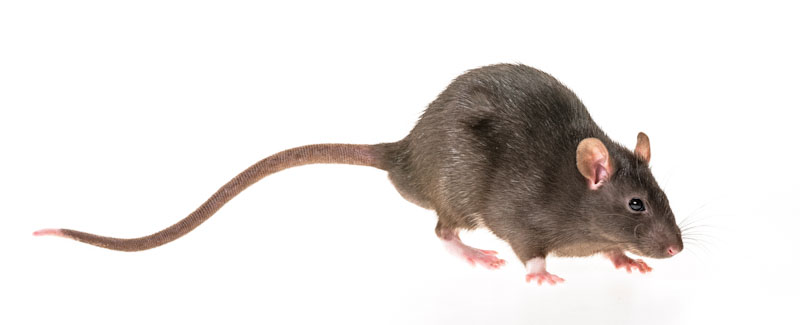
Brown Rats are the bigger of the two; without the tail, it can weigh over half a kilo and measure around 23 cm. They are often found in sewers.
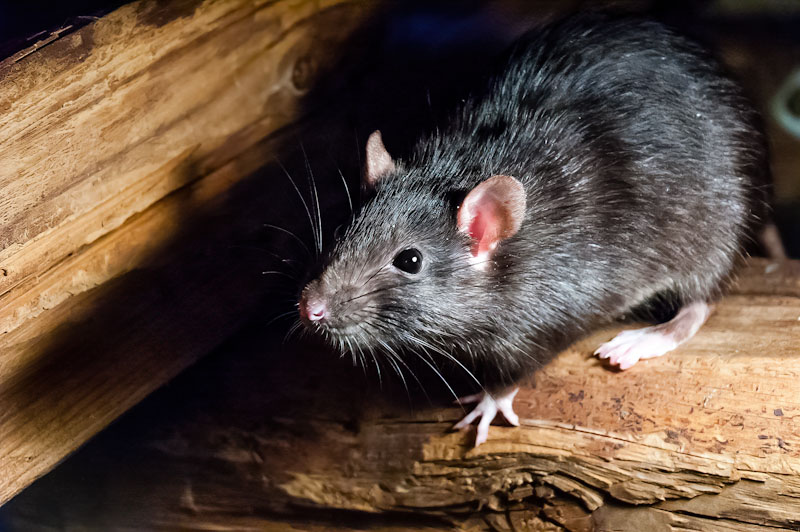
The Black Rat is shorter and weights half as much. It has a long, thin tail that is longer than its body, a pointed nose, huge, nearly hairless ears, and a relatively slender body. They are expert climbers.
Well Being and Safety
Rat Health Risks
A rat infestation is not just an annoyance; they pose a significant threat to our well-being and safety. These furry foes are notorious carriers of many nasty diseases, some of which can be transmitted to humans.
One such disease is leptospirosis, which can cause symptoms ranging from mild flu-like illness to severe organ damage. Rats can also carry salmonella, a bacteria responsible for causing food poisoning.
In addition to the health risks, rats can cause structural damage to buildings. Their constant gnawing on wires, insulation, and pipes can lead to electrical malfunctions, water leaks, and even fires.
Furthermore, rats are skilled food thieves, contaminating our food preparation areas and our supplies with their droppings and urine.
Consuming food that has been contaminated by rats can lead to various illnesses, including gastrointestinal infections.
Rats may look cute in cartoons, but they are carriers of some serious diseases. They can spread bacteria, parasites, and viruses through direct contact with their urine, faeces, or bites.
Rats Can Impact Mental Health

Living with a rat infestation can take a toll on our mental well-being. The constant fear and anxiety about encountering these critters can lead to sleepless nights, stress, and even phobias.
How Many Rats in the UK?
According to recent studies, there are approximately 10.5 million rats across the nation – that’s one rat for every six people! This staggering number illustrates just how pervasive these creatures have become.
Rats, known for their adaptability and resilience, have managed to thrive in various environments across the UK. They are highly adaptable to different climates and can be found in both urban and rural areas.
What Places Are Most Affected?
While rats can be found in every corner of the UK, some places bear the brunt of their infestations more than others.
Urban areas, particularly those with high population densities and inadequate waste management practices, tend to be hit the hardest. London, for instance, has been dubbed the “rat capital” of the country.

Urban Areas
The reasons behind the high prevalence of rats in urban areas are multifaceted.
With a large number of restaurants, markets, and residential areas, there is an ample food supply for rats to feast upon.
Additionally, the close proximity of buildings and interconnected sewer systems provide rats with easy access to different areas, allowing them to move and spread quickly.
Furthermore, urban areas often face challenges in waste management, which inadvertently attracts rats. Improperly sealed trash bins, overflowing dumpsters, and inadequate collection systems create ideal conditions for rats to scavenge for food and establish their nests nearby.
Rats have a keen sense of smell and can detect even the tiniest crumbs.
Rural Areas
Rats are not limited to urban areas. Rural regions, such as farmlands and countryside areas, also experience their fair share of rat problems.
These areas provide them with shelter, abundant food from crops and livestock feed, and less human presence, allowing them to thrive and cause damage to agricultural produce.
What Can Cause A Rat Population Explosion?
Environmental Factors
Rats are highly adaptable creatures and can thrive in various habitats, from sewers to gardens. Their ability to survive and reproduce is influenced by a multitude of environmental factors.
Resourceful rodents can easily scavenge through trash, finding leftover food and scraps to sustain themselves and their growing population.
Another environmental factor that facilitates rat populations is the accumulation of garbage. When garbage piles up in and around our living spaces, it creates a haven for rats to hide, breed, and multiply. The abundance of waste provides them with shelter and protection, making it easier for them to establish their presence.
Dense shrubs, tall grass, and unkempt gardens, disused sheds (and other solid structures) provide rats with ample hiding places and potential nesting sites. These areas offer a safe haven for rats to build their nests and raise their young, making it challenging for humans to detect and eliminate them.
Remember to use use wire mesh to protect compost heaps because otherwise they can turn into ready made nesting sites.
What Causes Rats to Come Into Your Home
Food
One of the key human factors that attract rats is leaving food out in the open. Whether it’s crumbs on the kitchen counter or unattended pet food, these food sources become a feast for rats. Their opportunistic nature leads them to exploit any available easy food supply, and our carelessness only aids their survival.
The normal feeding time for birds is daylight, so once dusk falls remove any food that you have put out for them at ground level. Better still use a bird table, feeder basket, or bird feeder to keep the food away from ground level.
Some bird feed can actually be a natural antidote to some rat poisons.
Garbage
Rats welcome improper household waste disposal with open paws. When we leave garbage in plastic bags outside without using secure bins, we are giving rodents their own food buffet.
They are not picky eaters and will happily feast on our leftovers, leading to infestations in and around our living areas.
Easy Entrance Points
Failing to seal entry points is another factor that invites rats into our homes and buildings.
Rats are excellent climbers and can squeeze through small openings.
If we do not take the necessary measures to seal cracks, gaps, and holes in the cavity or roof space of our buildings, we are essentially providing rats with an open invitation to invade our spaces.
Local Authority Initiatives
Efforts by local authorities to control and manage rats in the UK involve a combination of preventive measures, such as improved waste management practices, regular pest control inspections, and public awareness campaigns.
How Do You Get Rid of Rats In The Home?
Proper Waste Management
One of the most effective ways to prevent a rat population explosions is by adopting proper waste management practices.
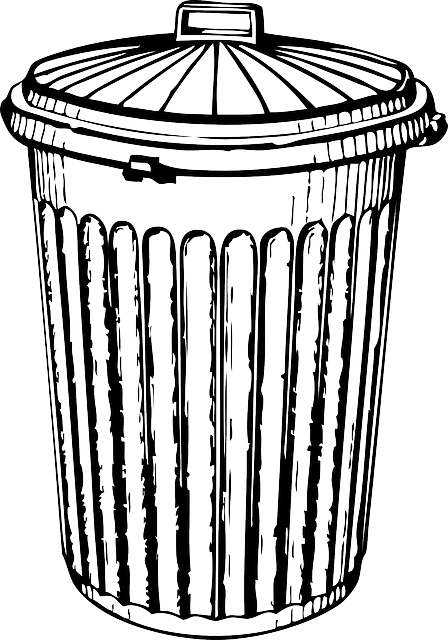
Make sure to keep garbage and recycling containers tightly sealed in bins with lids and dispose of it regularly.
Avoid leaving pet food outside overnight and promptly clean up any food spills. By eliminating easy access to any food residue, you’ll make your property less appealing to rodents.
Adopt A Rat Proofing Strategy
Sealing off entry points is crucial in the battle against rats. Conduct a thorough inspection of potential entry points on your property, paying special attention to gaps in walls, vents, doors, and windows.
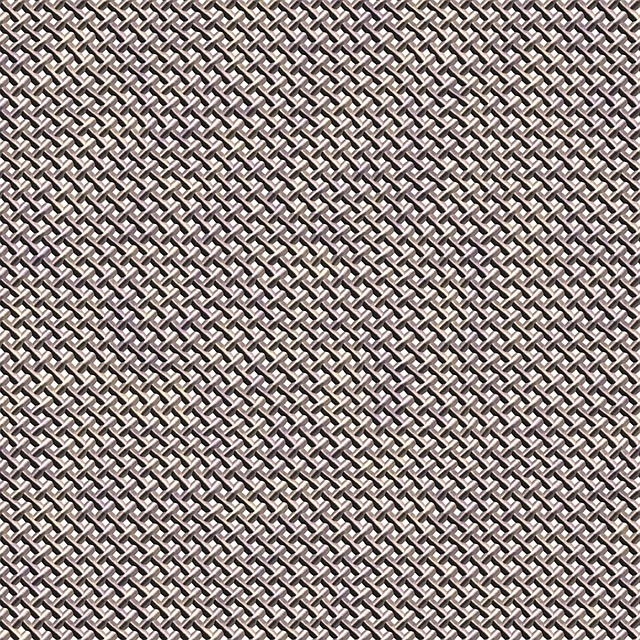
You can use wire mesh to secure airbrick openings.
Check for rat holes next to drain inspection covers, there might be blown bricks that might allow a rat to gain entry to your drains, and thence your property. Wire wool embedded with quick setting cement can seal such entry points.
In addition a one-way steel rat valve can allow your plumbing to function as intended but, prevent rats from travelling into your property from the sewer.
Feed Garden Birds, Not The Rats!
Keep bird feed off the ground, and stored in metal containers away from the attention of rodents.
How To Get Rid of Rats
Amateur Use Rat Poisons
Although rat poison (rodenticide) is available at a garden centre or a DIY store, amateur rat control has risks. Store rat poison in a safe and secure place that cannot be reached by children, pets, or wildlife.
Read the label on every rat poison container you buy, and follow the instructions to to ensure you do not suffer personal injury.
Additionally, care must be taken to install poison or traps in a secure location where they are out of the reach of children, pets, and other non-target animals.
The majority of rats are suspicious of new items introduced into their surroundings, such as traps or poisons. Do not expect instant success, because most rats will initially avoid them before exploring them.
Dead Rodents
When a rat consumes poison, it will likely die in a cavity or roof space from which a bad smell can emit. If you cannot locate the dead rodent, it may take several weeks for the body to decompose, and the smell dissipate.
Leaving these in the open can result in secondary poisoning of non-target animals, such as pets or birds scavenging on the dead rodent carcass.
Do you need a professional pest management company?
Professional pest controllers have the technical know-how monitoring equipment and experience to administer pest control effectively, while limiting the risk of to the environment and non-target species.
A Professional Pest Technician can:
- Spot tell tale signs e.g. rub marks, fresh tracks and established routes.
- Confirm entry points.
- Provide a written report and action plan.
- Help eliminate rodent activity using integrated pest management tactics.
- Access professional use rodenticides, that amateurs cannot.
To Sum Up
Our habits and actions can inadvertently create favourable conditions for these critters to breed and multiply.
By denying rats access to our homes and easy sources of food, we can prevent these unwelcome guests from moving in.
If they have moved in, and you do not feel confident enough to deal with them, call a pest professional.
And Finally, Rats As Pets!
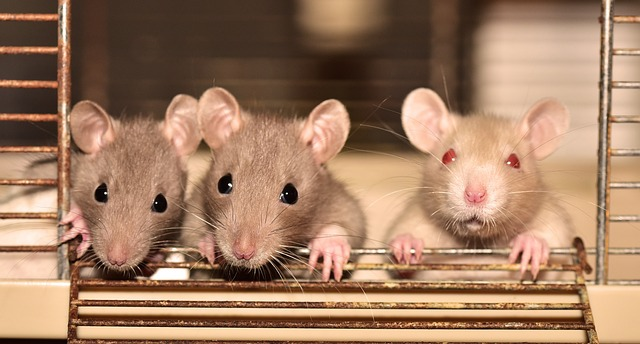
Rats are bright, tremendously social creatures.
Although they have complicated requirements and only live for 2 years, they can can develop strong ties with their human carers.
Granted not to everybody’s taste, but they are available from reputable pet shops!
Also read How to get rid of fleas in your home
See more Helpful Content
Visit our Homepage
